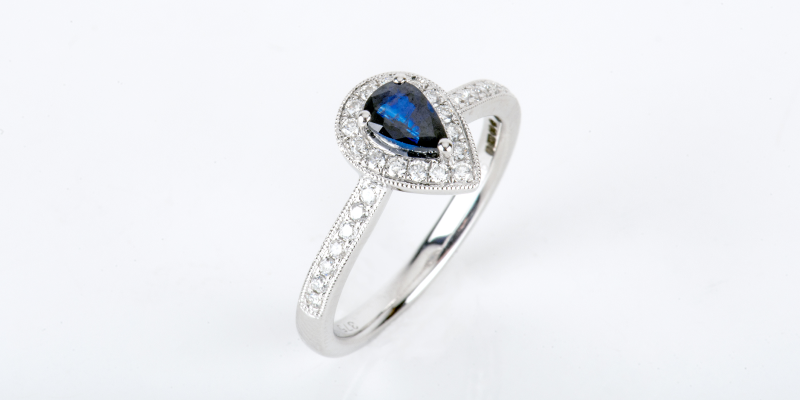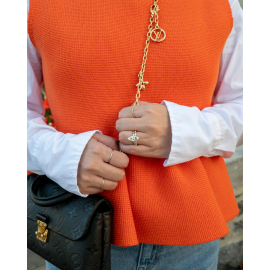Price match guarantee

We’ve teamed up with Klarna to provide flexible payment options, allowing you to shop the way you want. With Klarna, you can split your payment into 3 instalments or choose to pay later, making your shopping experience smoother and more convenient. Your order total must be between £100 and £499 to qualify.

We’ve teamed up with Klarna to provide flexible payment options, allowing you to shop the way you want. With Klarna, you can split your payment into 3 instalments or choose to pay later, making your shopping experience smoother and more convenient. Your order total must be between £100 and £499 to qualify.

May 26, 2021 | by Admin
It is law within the UK that every item of precious metal sold such as Platinum, Gold, Silver is stamped labelling the item with the type of metal it is. Platinum pieces which weigh less than 0.5 grams, 18ct Gold and Palladium pieces weighing less than 1.0 gram and Silver pieces weighing less than 7.78 grams are except from hallmark.
At Diamonds Factory all our products are hallmarked as per UK hallmarking law from London Assay Office (The GoldSmith Company)
The Goldsmiths' Company Assay Office is the oldest assay office in the United Kingdom. It has provided hallmarking services since The Goldsmiths' Company was founded in the 1300s. The company received its royal charter in 1327 and ranks 5th in order of precedence of the 12 Great Livery Companies of the City of London.
Hallmarking dates back to the 1300s when Edward I of England passed a law requiring any item made of silver, which was offered for sale, to be at least of equal quality as that of the coin of the realm (silver currency). The wardens of The Goldsmiths' Company were tasked with visiting workshops in the City of London to assay (test) silver articles. If these articles were found to be below standard they were originally destroyed and the metal forfeited to the King. If they passed, each article received the King's mark of authentication - the mark of a leopard's head. By 1478, there were several hundred workshops and merchants manufacturing silver articles in the City of London. It was not possible for the wardens to visit them all so the merchants were ordered to bring their items to Goldsmiths' Hall for testing and marking and a permanent Assay Office was established in the building. This is the origin of the term hallmark - struck with the King's mark at Goldsmiths' Hall.
In 1544 the Goldsmith's Company adopted the King's mark as their town mark and the mark of the leopard's head is now internationally recognised as the mark of this assay office.
The Goldsmiths's Company Assay Office is still based at Goldsmiths's Hall and remains the oldest company in Britain to be continually trading from the same site. However, it also has two satellite offices; at Greville Street in Hatton Garden in the heart of the London jewellery quarter and within a high security complex near London's Heathrow airport. It now has a new off-site facility within the Dalston-based jewellery manufacturer, Allied Gold. This is the first time in the Assay Office's 700 year history that it has opened permanent hallmarking services on a customer's premises.
In addition to hallmarking, the office has now expanded its range of services to support the jewellery trade and enforcement authorities. It offers a variety of specialist analytical services including nickel, lead & cadmium testing, antique silver dating, non-destructive compositional analysis, plating thickness measurement and a melt and assay service for scrap precious metal carried out in their fully independent on-site laboratory. Other services offered are a jewellery valuation service, laser marking, trading standards assistance, high quality photography and a comprehensive range of training and educational seminars, lectures and specialist events.






Mostly known for their rich blue hue, sapphires are a popular coloured gemstone. They have a rich history and have long been favoured in jewellery by royalty and celebrities. From the Duchess of Cambridge’s stunning sapphire engagement ring to the Blue Giant of the Orient, which is the largest faceted blue sapphire in the world, there are many impressive famous sapphire pieces to admire. But what does a sapphire engagement ring mean? We learn the origin, meaning and symbolism behind this beautiful blue gemstone.
4 Prong Setting Round Blue Sapphire Fashion Ring
From £730
Prong Setting Blue Sapphire Halo Engagement Ring
From £614
Diamond Side Stone Blue Sapphire Emerald Engagement Ring
From £470
Full Bezel Setting Round Three Stone Blue Sapphire Ring
From £696
Prong Setting Round Blue Sapphire Half Eternity Ring
From £758
Oval Halo Blue Sapphire Engagement Ring
From £1,197
Oval Halo Blue Sapphire Engagement Ring
From £570
Oval Halo Blue Sapphire Engagement Ring
From £1,666
Emerald Halo Blue Sapphire Engagement Ring
From £1,737
Prong Setting Blue Sapphire Side Stone Ring
From £844
Prong Setting Blue Sapphire Three Stone Ring
From £719
Prong Setting Oval Blue Sapphire Half Eternity Ring
From £508
Prong Setting Blue Sapphire Side Stone Ring
From £1,252
Prong Setting Oval Blue Sapphire Side Stone Ring
From £632
Sapphire origin
Sapphires originated in India in the 1800s and since then have been discovered in areas across the world. Today, sapphires are mined mainly in Sri Lanka, India, Myanmar, Madagascar and Australia. Montana was given the nickname the “Treasure State” after sapphires were found during a quest to find gold in 1865.
History of sapphires
Often considered a symbol of nobility, clergy members and royalty decorated their robes with sapphires for centuries. In ancient Greece and Rome, Kings and Queens believed that sapphires protected them from envy and harm. Throughout the Middle Ages, people believed blue sapphires symbolised heaven and attracted heavenly blessings. Due to the rich history and symbolism behind sapphires, they are still associated with good fortune, royalty and protection today.
Types of sapphires
Most people don’t realise there are different types of sapphires. In jewellery, when we use the word “sapphire”, we are referring to blue sapphires. Sapphires come in many colours (minus red), such as purple, pink, orange and brown. The colour of a sapphire depends on how and where it was formed, but blue sapphires are the most popular colour.
What does a sapphire engagement ring mean?
A sapphire engagement ring means honesty, sincerity and faithfulness. It is also believed to provide good fortune within marriage and to keep it strong and healthy. The beautiful symbolism and meaning behind sapphires are what makes them so special for engagement rings.
What does a sapphire engagement ring symbolise?
Legend states that sapphires symbolise wisdom, nobility and good fortune. Prince Charles gave a sapphire diamond ring to Lady Diana Spencer for their engagement. Today this ring is worn by the Duchess of Cambridge and features a beautiful sapphire surrounded by a halo of diamonds. Sapphires have long been tied with romance and royalty and considered a symbol of holiness for royals.
Popular sapphire engagement ring styles
The most popular sapphire engagement ring styles tend to be halo rings. Just like the Duchess of Cambridge’s stunning sapphire engagement ring, sapphire and diamonds pair perfectly together within jewellery. Fancy shapes tend to be the preference for sapphires. Emerald, pear and oval sapphire engagement rings have an antique appearance that is favoured by many. Similarly, yellow gold tends to be the preferred precious metal. A beautiful yellow gold sapphire engagement ring is a good choice for your partner, particularly íf they love vintage-style rings.
Enjoyed this article? Learn more about sapphires and coloured gemstones in our gemstone guide.